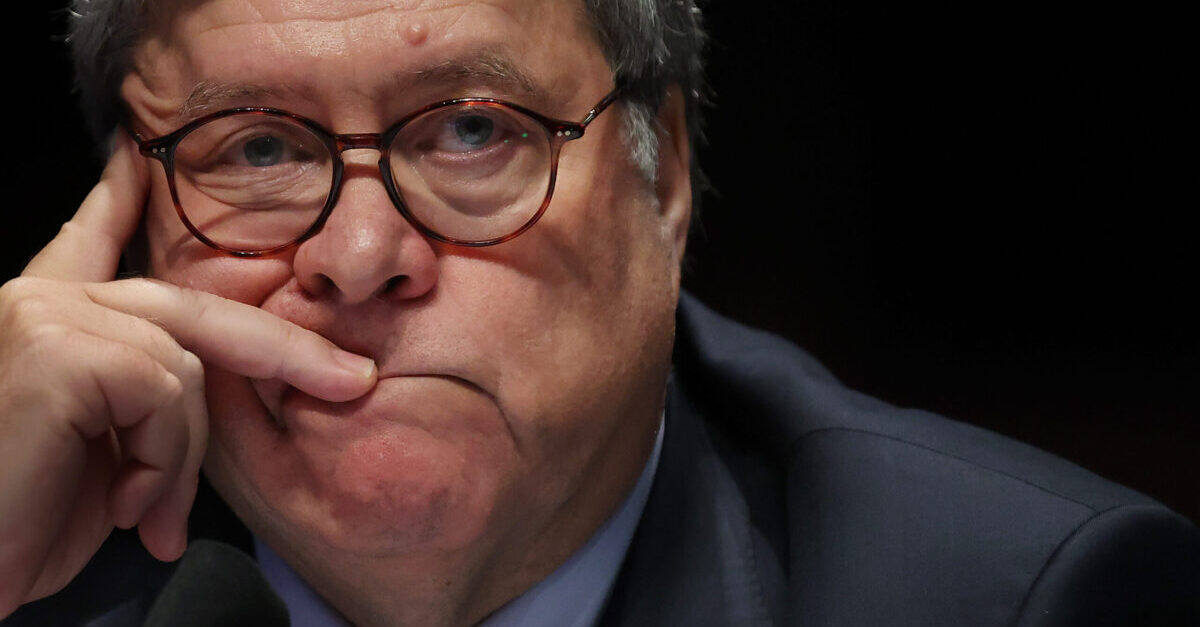
It was a “routine” maneuver—at least that’s how Attorney General Bill Barr previously his DOJ’s twice-unsuccessful, as of Tuesday, effort to mount a publicly funded defense of President Donald Trump amid ongoing legal woes.
In a terse two-page order by the U.S. District Court for the Southern District of New York (SDNY), Judge Lewis A. Kaplan admonished the U.S. Department of Justice (DOJ) for its second failed attempt at (1) having E. Jean Carroll‘s defamation case against Trump removed from state court to federal court; and (2) having the United States “substitute itself for Donald J. Trump in his personal capacity as the defendant” in the high-profile case.
In early August, Carroll won a significant victory when the New York State Supreme Court issued a decision in her favor. That ruling resulted in Carroll’s lawyers giving Trump a series of deadlines to produce his DNA and other evidence as part of mandatory discovery in Carroll’s year-old defamation case against him.
Carroll is an author and advice columnist who accused Trump of raping her sometime in late 1995 or early 1996. She initially made that accusation—one of more than 20 such sexual assault allegations against the president—during the summer of 2019. Trump later denied the accusation in an interview with The Hill and Caroll subsequently sued him for defamation in New York State court.
In early September, Barr’s DOJ caused a stir by attempting to substitute itself as the defendant in that lawsuit by arguing Trump was “acting within the scope of his office as President of the United States” when he said that Carroll’s rape accusation was a lie.
Citing the Westfall Act as the governing authority, the DOJ’s significant intervention on Trump’s behalf in the fast-moving lawsuit has thus far been plagued by the fact that the federal court simply has not accepted the removal attempt.
A DOJ attempt to have the legal controversy renamed Carroll v. USA on the official case docket was quickly changed back to Carroll v. Trump. Essentially, the SDNY reverted the lawsuit’s name because someone at DOJ had clearly jumped the gun.
Barr, for his part, has defended the DOJ intervention as “normal” and something that is “done frequently.”
“This was a normal application of the law,” he said the day after the as-yet unsuccessful intervention–also mentioning some precedential uses of the Westfall Act. “The law is clear, it is done frequently.”
The 77th and 85th attorney general went on to describe the removal as a “somewhat routine” action and blamed the firestorm that followed on the “bizarre political environment” of the moment.
Notably, however, none of the SDNY staff actually signed off on the removal effort. Former Russiagate investigator Andrew Weissmann noted that all of the signatures on the original request belonged to Washington, D.C.-based figures at “Main Justice.”
“Yet Barr says this is entirely routine,” Weissmann mused.
On Tuesday, DOJ struck out again.
First, Judge Kaplan noted that Barr’s original effort lacked all of the necessary exhibits that had previously been filed in the case.
Per the order [emphasis added]:
When a defendant removes an action from a state court, the defendant is obliged to attach to the notice of removal that the defendant must file in the federal court “a copy of all process, pleadings, and orders served upon such defendant or defendants in such action.” 28 U.S.C. § 1446(a). The United States’ notice of removal attached as exhibits papers from the state court but omitted all exhibits to those papers while promising that it would lodge the entire state court record separately.
Those promised state court records were eventually filed–but not in line with the rules on point here.
“Today the United States filed a notice of the lodging of the entire state court record as of the time of removal,” Kaplan noted before providing a list of those filings. Each submitted file was titled some iteration of “Process, Pleadings, and Orders Part 1,” “Process, Pleadings, and Orders Part 2,” and so on.
But such nomenclature is apparently not specific enough.
Kaplan cited the court’s standing rule–adding his own emphasis:
Filing Users must submit in electronic form all documents referenced as exhibits or attachments, unless the Court permits paper filing. Exhibits must be filed as attachments to the main document. Each attachment must be clearly titled so the subject of the exhibit is clear. The filing of exhibits in text searchable format is encouraged, but not required.
The SDNY’s order gives the DOJ until September 18 to fully comply with the relevant rules–and even helpfully explains exactly what Barr’s subordinates have to do to finally get it right.
Read the full order below:
Kaplan Order in Carroll Defamation Case by Law&Crime on Scribd
[image via Chip Somodevilla/Getty Images]